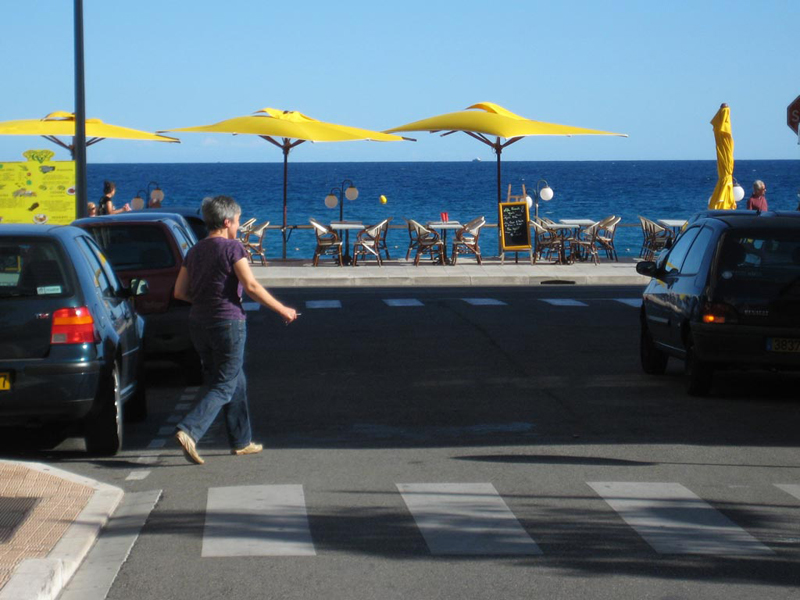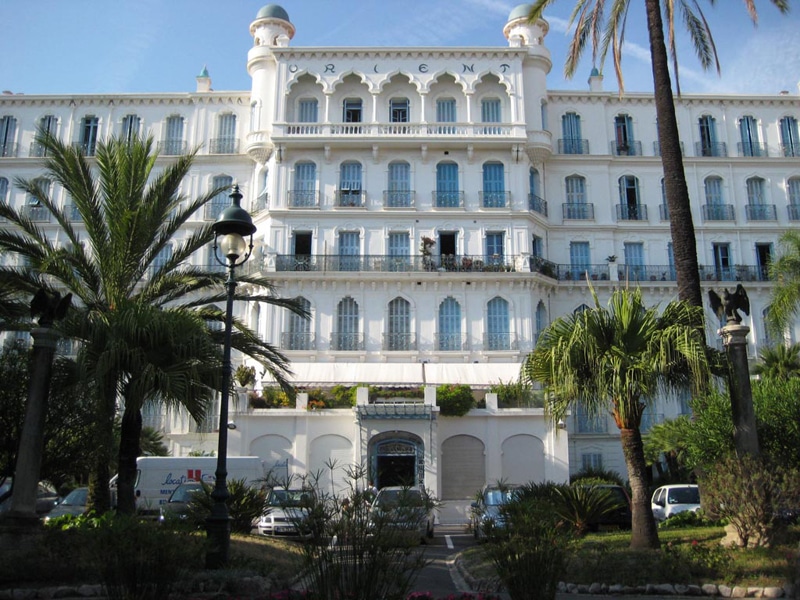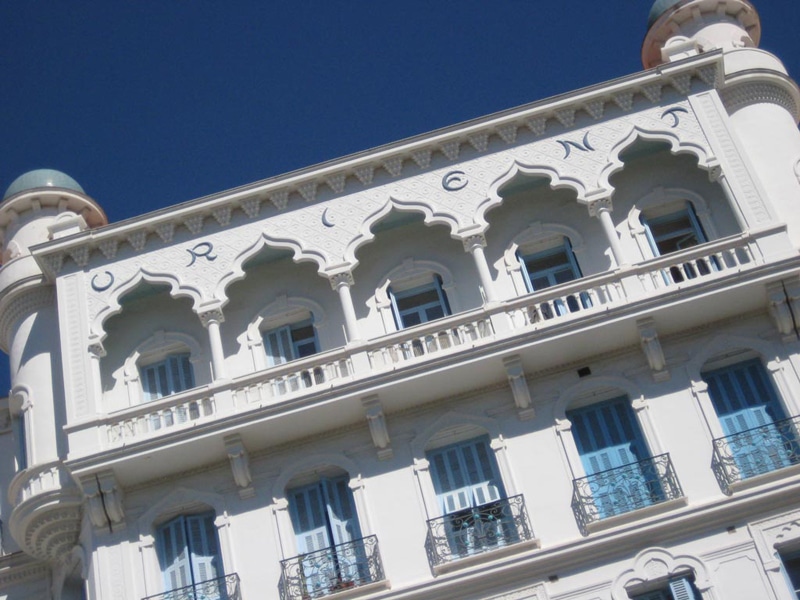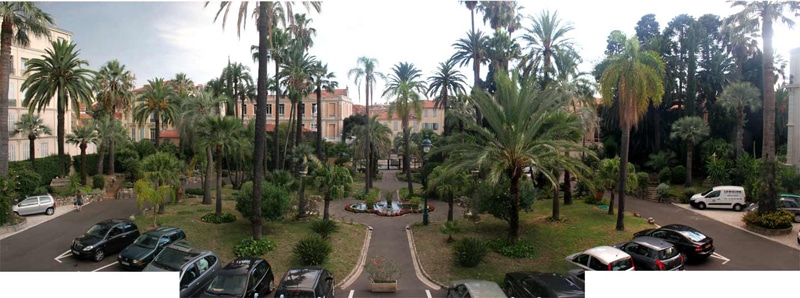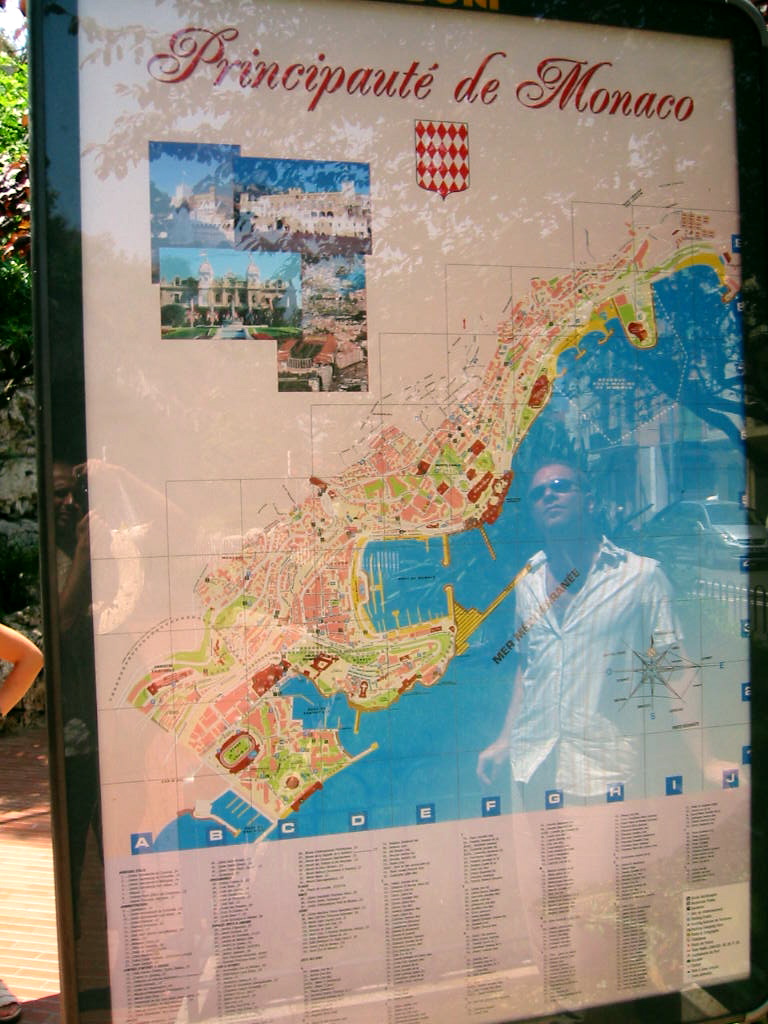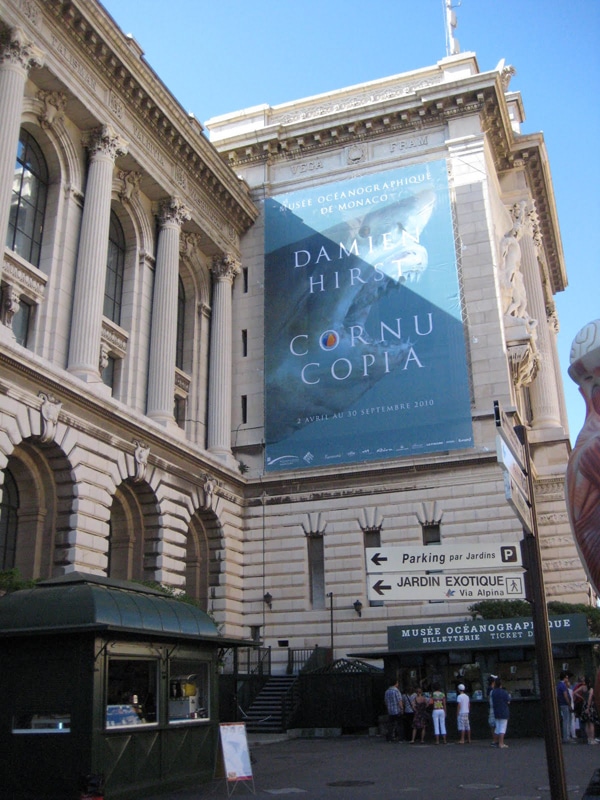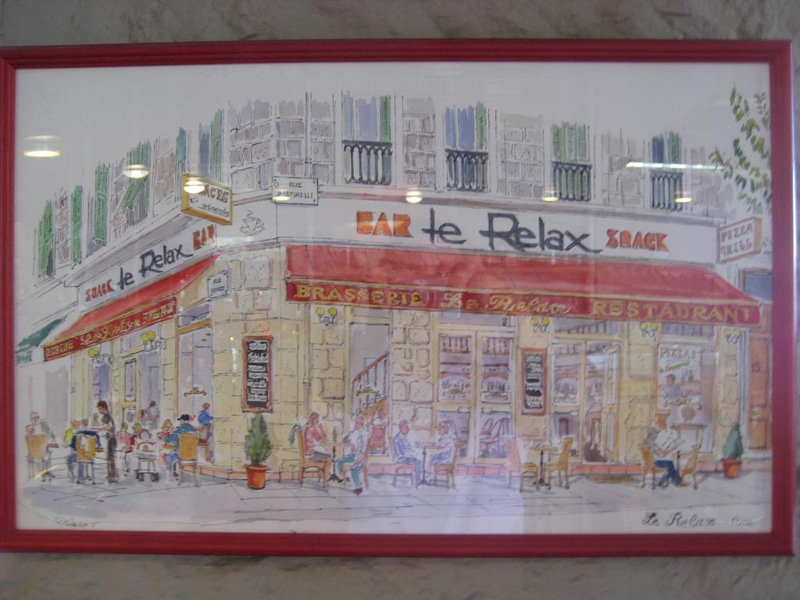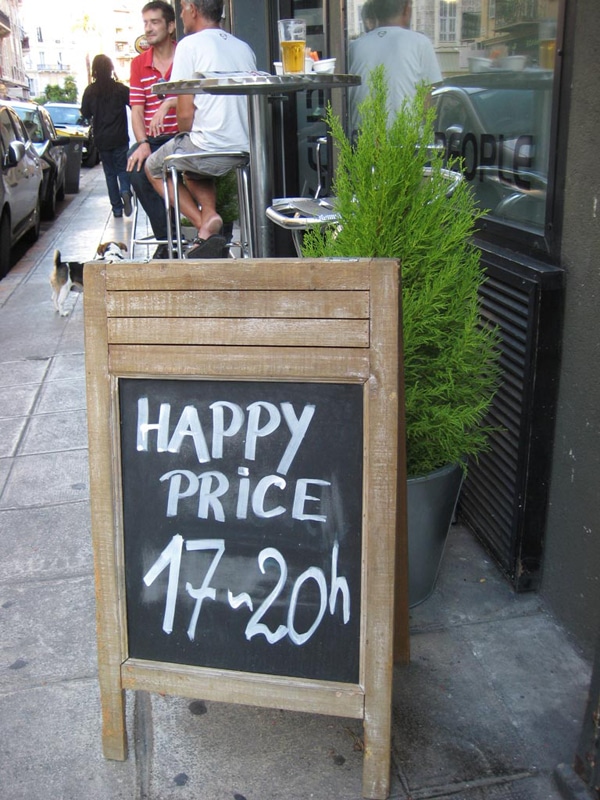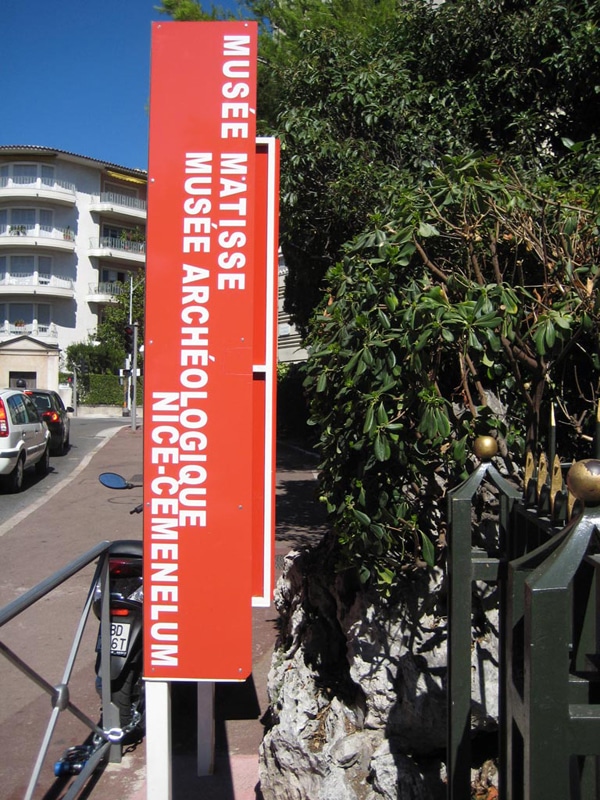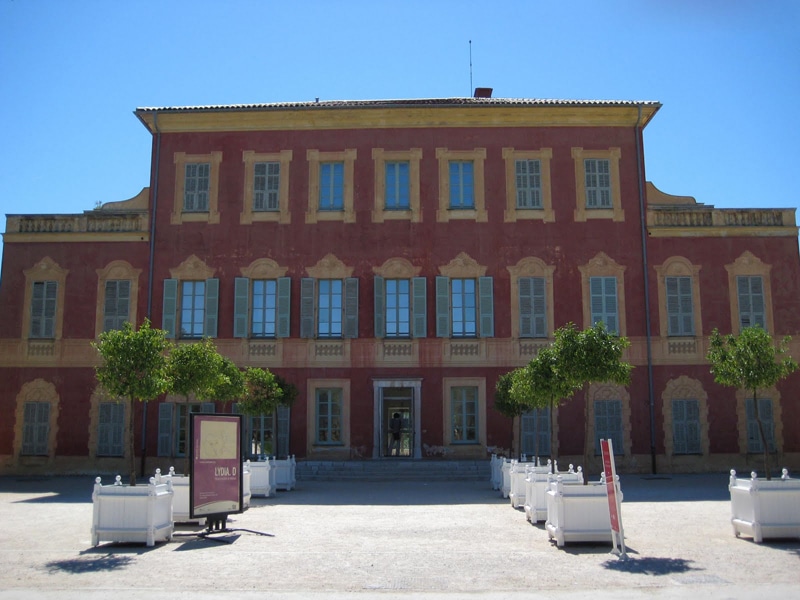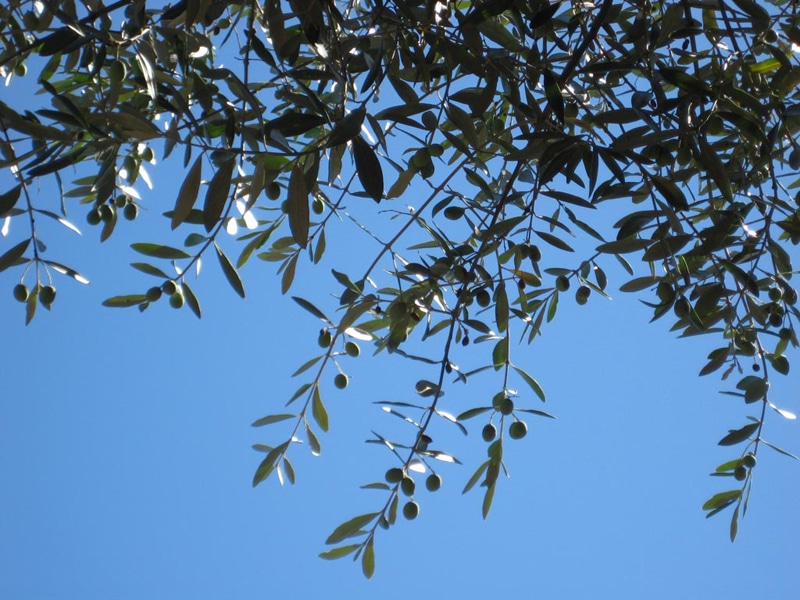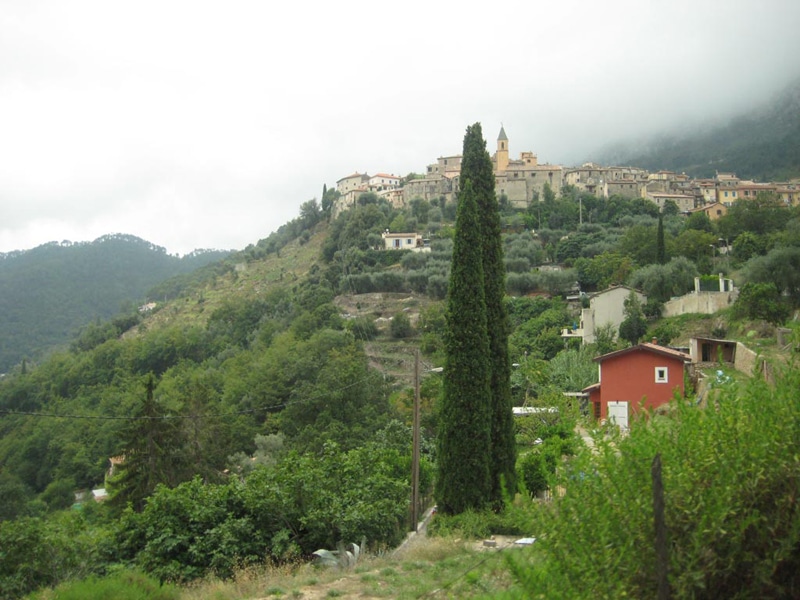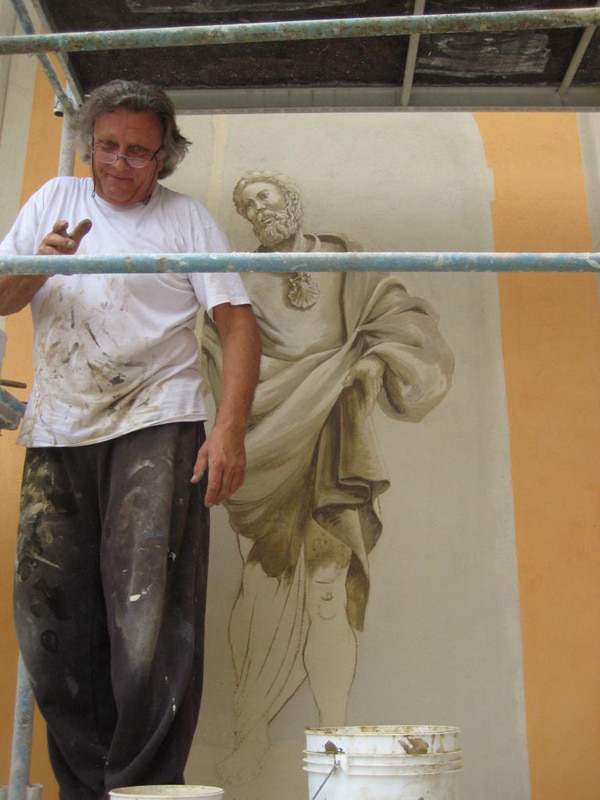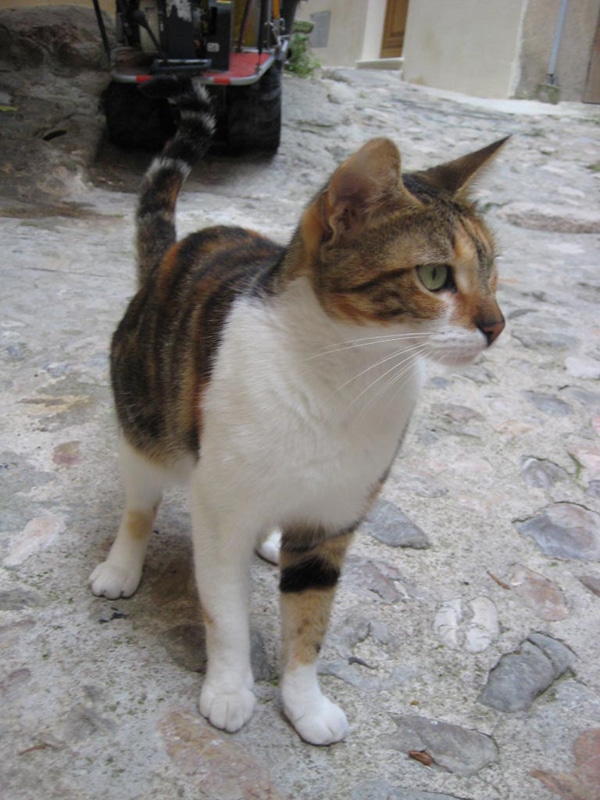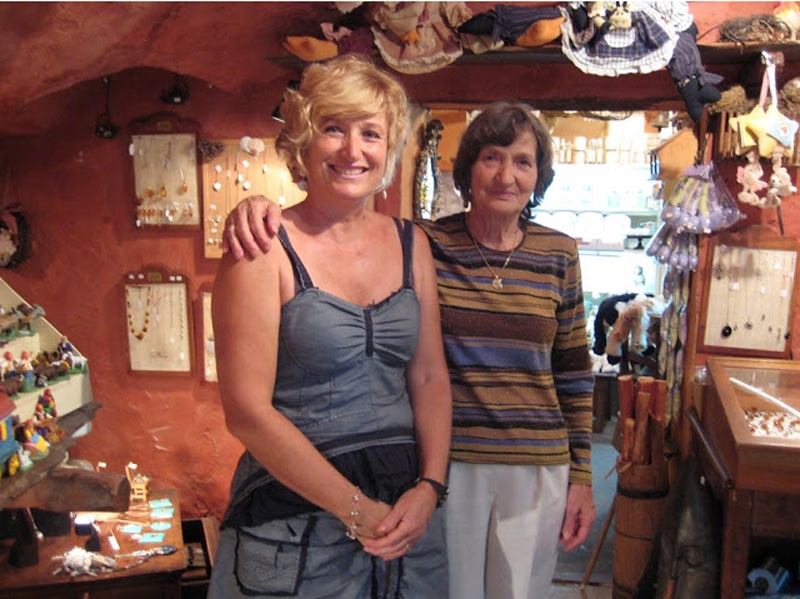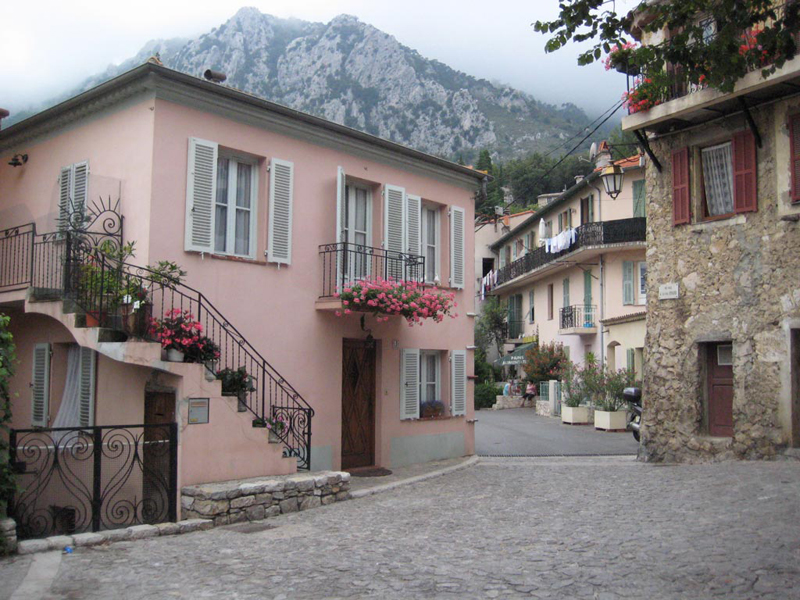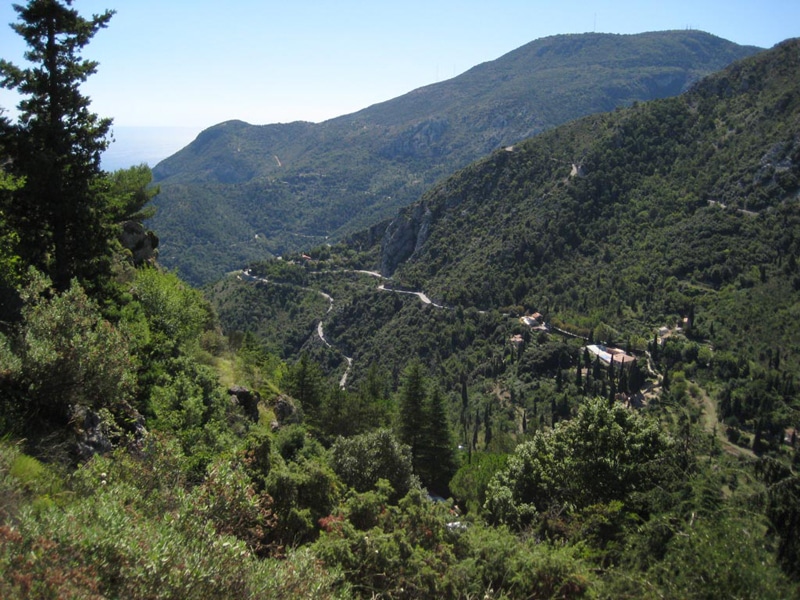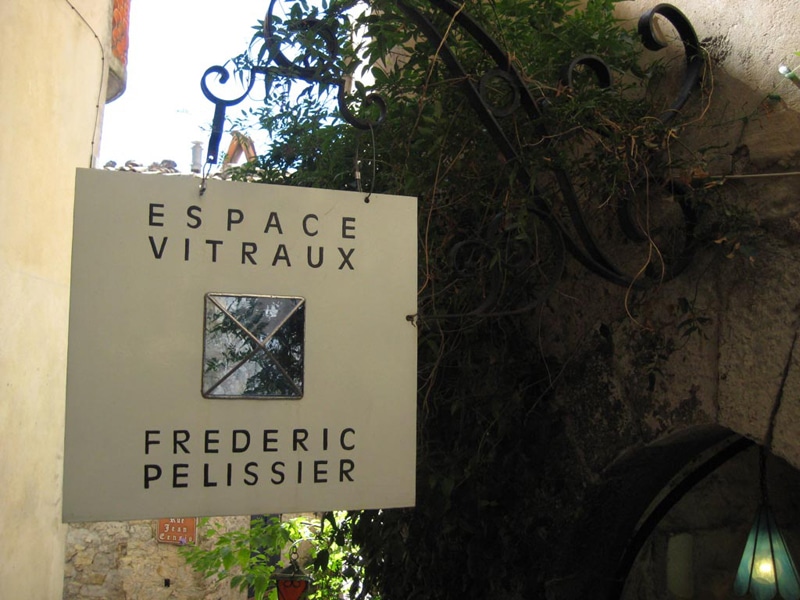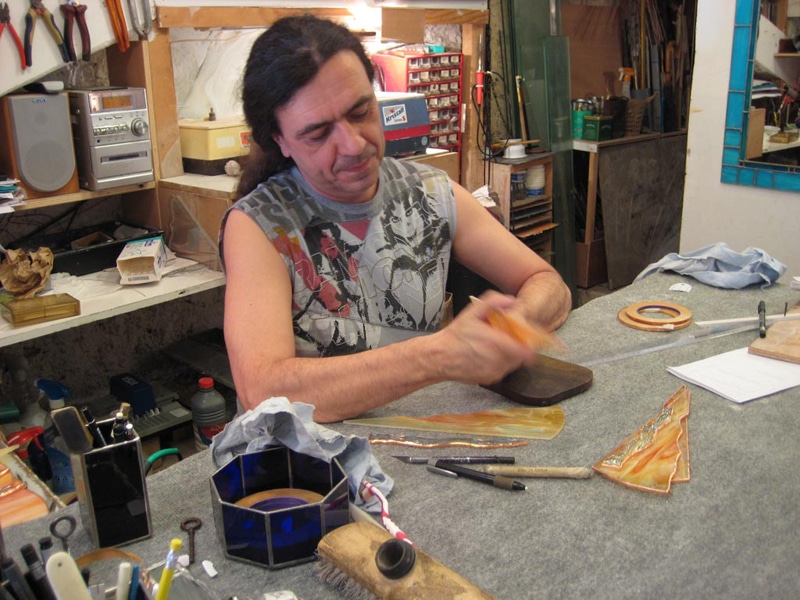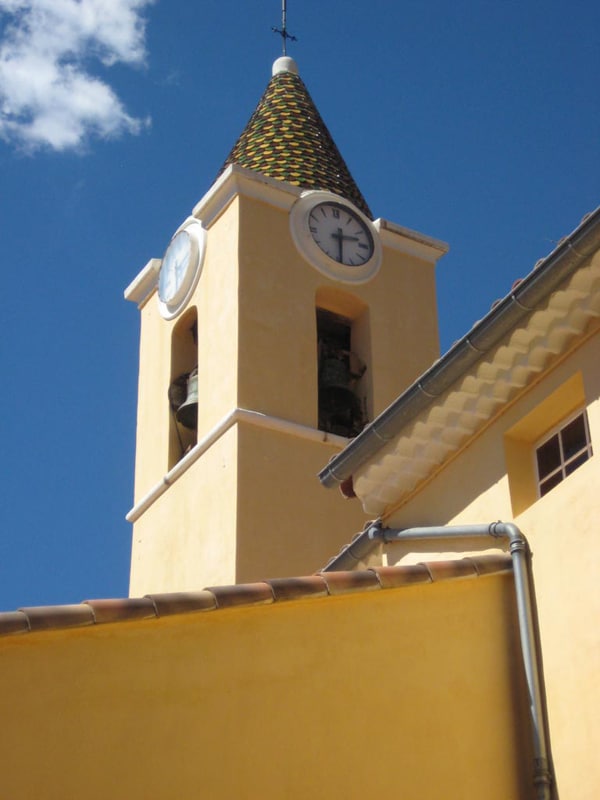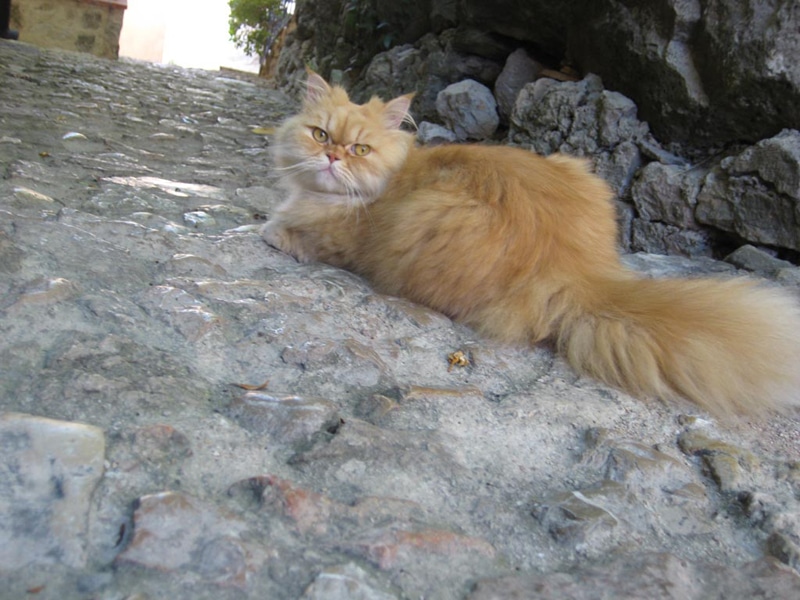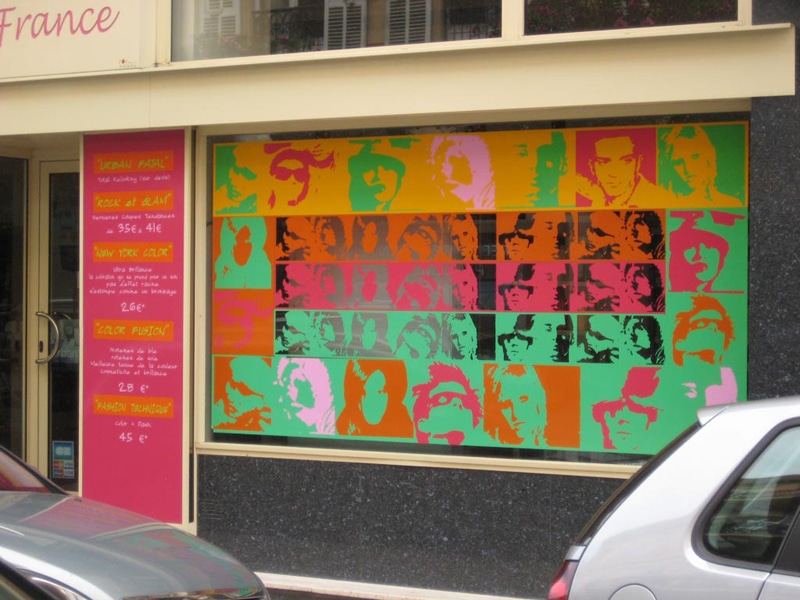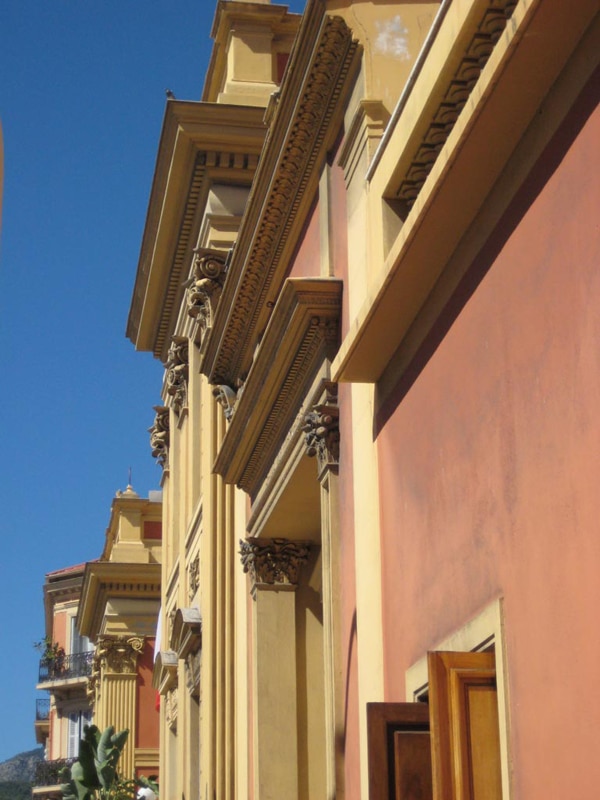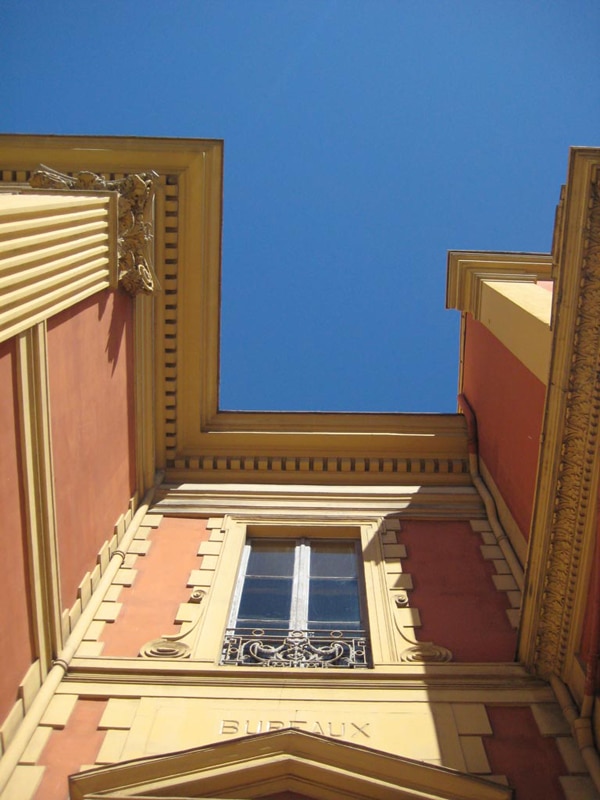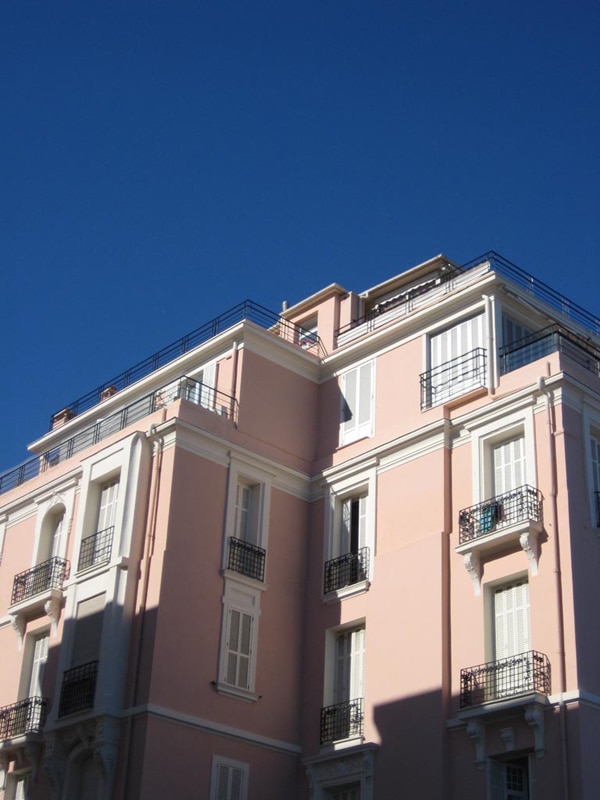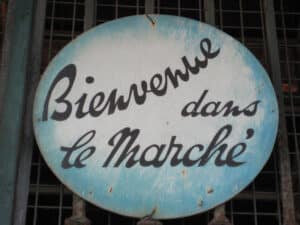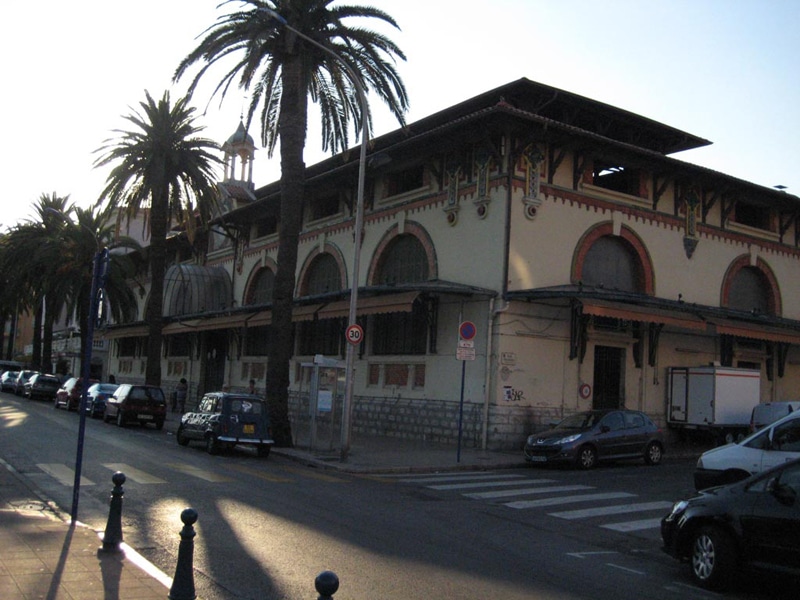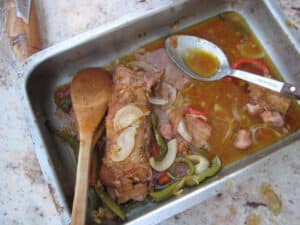Journey with me through the Medieval perched villages (villages-perchés) of the Maritime Alps, down the rocky, craggy cliffs leading to the deep blue-green of the Mediterranean.
My intention was to visit the lavender fields of Provençe, but there were mass fires due to record heat in Europe that year. So, I would have likely come upon scorched fields (lovely scented fields, but scorched), and so I scrapped that part of the trip. As it turns out, there was still plenty to see.
Home Base: Menton, France
At the Beach in Menton
I still get woozy from the deep blue of the Mediterranean here.
This is the beautiful place where I stay when I come to the south of France (sud la France): an apartment of good friends. They live in London, but I met them while on holiday here, back in 2003. We’ve been friends ever since.
Anyway, here’s where it all started: The Orient Palace apartment building. See the green just above the entryway? That’s their terrace. It’s the only terrace in the entire building. When I visit, I spend hours here each day and night. Summer in the Côte d’Azur, with its warm days and balmy nights, is perfect for spending time outside. And with such a large terrace, one can enjoy everything from meals, to settling down to a good read, to just staring off into space.
The Orient Palace, buitlt in 1902, is a truly grand building, with bright whitewashed walls that gleem in the intense sun. It employs a very simple color scheme: white and baby blue with black wrought iron details. To this New Yorker, the apartment and terrace are immense – and the grounds are stunning, too.
Looking over the terrace to the grounds.
The fountain at the entrance of the grounds.
Aaaaaahhh, Monaco!
Monte-Carlo is the mid-point travel stop between Nice and Menton, and it’s a great place to window shop. Unless you are one of the jet-set, with unlimited wads of cash, it’s expensive here! But guess what? It actually lives up to the hype! All the buildings look like wedding cakes, and as everywhere in the Côte d’Azur, the landscape is breathtaking.
Getting the “lay of the (very tiny, gorgeous) land.” Monaco is the second smallest and the most densely populated country in the world. It’s also well known as a playground for the rich and famous; which themselves become a spectacle for tourists and an economic engine in the Mediterranean. In 2014 it was that noted about 30% of the population were millionaires, similar to Zürich or Geneva.
The train station in Monte-Carlo: the Monégasque rat race.
The harbor.
Street life. Note the gigantic cruise ship in the background.
I took a trip to the Musée Oceanographique, specifically to see the Damien Hirst exhibit. Unfortunately they forbade the use of even non-flash photography. Here’s the outside of the place with the enormous banner advertising the event. #ItUnderwhelmed
Some marine life from the aquarium.
Exploring Nice
The last time I was in the French Riviera, the only time spent in Nice was for connecting trains and/or buses.
If you’ve done any travel abroad, you know that the areas surrounding the train and bus stations are rarely representative of the city as a whole. They tend to be the sketchy areas where one doesn’t want to spend much time. However, on this trip, I spent more time in Nice, and really fell in love with the place.
Le Relax Bar in Nice, a place I like to frequent.
I get such a kick out of awkward (and often funny) translations, even in New York. But here, how cute are the French?
I met Johny in Nice at the bar. The men in Nice are so friendly. Despite the language barrier, we got along just fine.
Pilgrimage to the Musée Matisse
This man is my hero, and here’s why; (excerpt from his WikiPedia page) Diagnosed with abdominal cancer in 1941, Matisse underwent surgery that left him chair and bed bound. Painting and sculpture had become physical challenges, so he turned to a new type of medium. With the help of his assistants, he began creating cut paper collages, or decoupage. He would cut sheets of paper, pre-painted with gouache by his assistants, into shapes of varying colours and sizes, and arrange them to form lively compositions. Initially, these pieces were modest in size, but eventually transformed into murals or room-sized works. The result was a distinct and dimensional complexity—an art form that was not quite painting, not quite sculpture.
Now a museum, this was where Matisse lived and worked until his death in 1954. Notice the windows with reflections: these are the only real windows. The rest are painted to look real (trompe l’oeil).
The museum is surrounded by olive trees, quite common in this part of France.
Apart from the olive, the intricately modeled grain of the wood is used in the making of furniture, kitchenware and decorative objects. In the early twentieth century, Italian immigrants came up through the Rhone valley in France. Along with them came their craftsmanship and their wood from the olive tree. Pass[ed] down from generation to generation, exquisite production is still alive and well in southern France today.1
1http://www.provenceencouleur.com/#!olive-wood-laurent-barbier/c177w
Though the olives were not quite ready to be harvested, it was exciting to see them being cultivated.
Day Trip: the Perched Villages of Gorbio and St. Agnes
View From the Bus to Gorbio. The Place Is So High Up, It’s Often in the Clouds
Villages Perchés – so named, these villages are from Medieval times, built within fortified walls. They were built to be impenetrable. Today they’re mostly tourist areas, although even in the height of summer, neither Gorbio (above) nor St. Agnes (below) are full of tourists. Each are accessible only by car or by local bus trips, for a nominal fee.
Painter Working On the facade of an Old Church in the Village of Gorbio.
Craftsmanship is important here, as it is in most of Europe. Rather than tear down an old building, and put up something modern, here they prefer to maintain and, in this case, embellish.
Un chat de Gorbio. Cat pics are a thing with me, don’t judge.
The Amazing Shop ‘La Cave de Gorbio’ with Owner, Frédérique Truchi (left), and a Friend
This is a great place to find really interesting treasures: the kinds of things you could give as gifts, totally original and lovely stuff.
Check it out: http://lacavedegorbio.e-monsite.com/
These are Actually People’s Homes.
Gorbio was founded in 1157, and it looks like a movie set. While it’s a tourist village, there are people who actually live here. The lucky residents look out their windows and see the Maritime Alps.
St. Agnes (pronounced sont ahn-yez)
On the Bus to St. Agnes
The buses in this part of France are dependable, inexpensive and will take you places to which you may not feel comfortable driving. My latest trip there we rented a car, and it’s not that daunting. But if you are the slightest bit acrophobic, use the mass transit: it’s affordable and safe.
The view from the top of St. Agnes.
I came to St. Agnes specifically to pay a visit to my favorite glass artist, Frederic Pelissier. I met Frederic back in 2003 and bought some of his pieces – and delight in so doing each trip. He works in cut, not blown glass, and his work is exquisite.
Visit his website: http://www.vitraux-spatium.com/index.php
Mssr. Pellisier at work. Call ahead to make sure he’ll be there, and you can meet him and see him in action.
A typical church in these parts. I love the contrast of the warm yellow façade and the deep blue of the sky.
Un chat de St. Agnes.
Back in Menton
Unlike most beaches in the States, the beaches here are made of small stones. The constant tides of the Mediterranean polish them till they’re silky smooth.
A beautifully designed hair salon storefront.
Late Afternoon Light in Menton
The skies in this part of France are what inspired artists such as Picasso, Matisse and Cocteau to create some of their most beautiful works. There’s a special quality about the light here, much different from Paris or other cities.
Dinner Fiasco
As mentioned before, when I visit, I stay at my friends place, and this time we arranged our vacations to overlap by a few days. On their last night, I decided I would make dinner. So, off the the Marché I went.
The Market
In the local market in Menton, one can find all kinds of wonderful food, all fresh! A huge cheese merchant, meat vendors, a great wine section, the most amazing vegetables, desserts, etc. Every time I come I mean to take some shots from inside, but I forget: the place overwhelms!
I was so excited to feed my friends who had so often done the same for me. I prepared what I assumed were 4 beautiful cuts of LEAN pork (all the sign said was Porc) and made up a sauce of orange marmalade, mustard, fresh lemon juice and a little cayenne for some heat. I chopped up a red and a green pepper and two beautiful white onions. I seasoned the pork with salt and pepper, then poured the very thick sauce over them to braise in a 300°F oven for 3 hours. As it cooked, it filled the apartment with the most intoxicating aroma. I was getting ready to WOW my friends, I was sure of it.
I’m feeling rather proud of myself for pulling this off. As I’m doling out each piece, however, I had this sinking feeling in my gut that something was not right.
Steve saw the finished dish and figured out immediately what it was. “It’s HOOVES” (not just feet, but HOOVES.) “See, here are the toes.”
I nearly fainted. If you look closely at the image below, in the upper right part of the meat, you can see a toe.
I was totally horrified: I had actually cooked Pork HOOVES. Still, I figured “when in France” and all that, and tried to let go of my sheltered American values on what I will and will not eat. I figured I’d give it a try.
When I broke apart my portion, however, the whole thing just sloshed out, revealing a mass of bones and cartilage – all of which had been broken to allow the thing to look like a perfectly rectangular slab of meat at the market. And the smell nearly did me in.
So we all laughed about it (they more than me) and I vowed next time to make them a proper dinner. Steve was the trooper, cleaning off the bones of what little meat was there, eating the vegetables, etc. Lou and I just pushed the plate aside and dipped the baguette in the sauce, which did come out well.
Here’s what Wikipedia says about the hoof:
A hoof is the tip of a toe of an ungulate mammal, strengthened by a thick horny (keratin) covering. The hoof consists of a hard or rubbery sole, and a hard wall formed by a thick nail rolled around the tip of the toe. The weight of the animal is normally borne by both the sole and the edge of the hoof wall. Hooves grow continuously, and are constantly worn down by use.
Nice, huh?
– – – – – – – – – – – –
This is a Continuing Journey for Me. I hope it Will Be For You, Too.
The Cote d’Azure, the French Riviera, the South of France: however you refer to it, I promise you, you will not be disappointed.
If you’ve never been to the south of France, do yourself a favor and put it high on your list of places to see. From the close proximity to Italy and Monaco, to the peaks of the Maritime Alps, to the deep blue waves of the Mediterranean, the scenery and culinary spectrum is stunning, vast and varied. You will find the people friendly and helpful – of course it helps to learn a few phrases of French. Bon Voyage!

Scott is a NYC-based art director, graphic designer and avid photographer. His print and web design work encompasses a diverse clientele, from large corporate firms to small private companies. Examples of his work can be found here: http://ambrosinodesigns.com/

